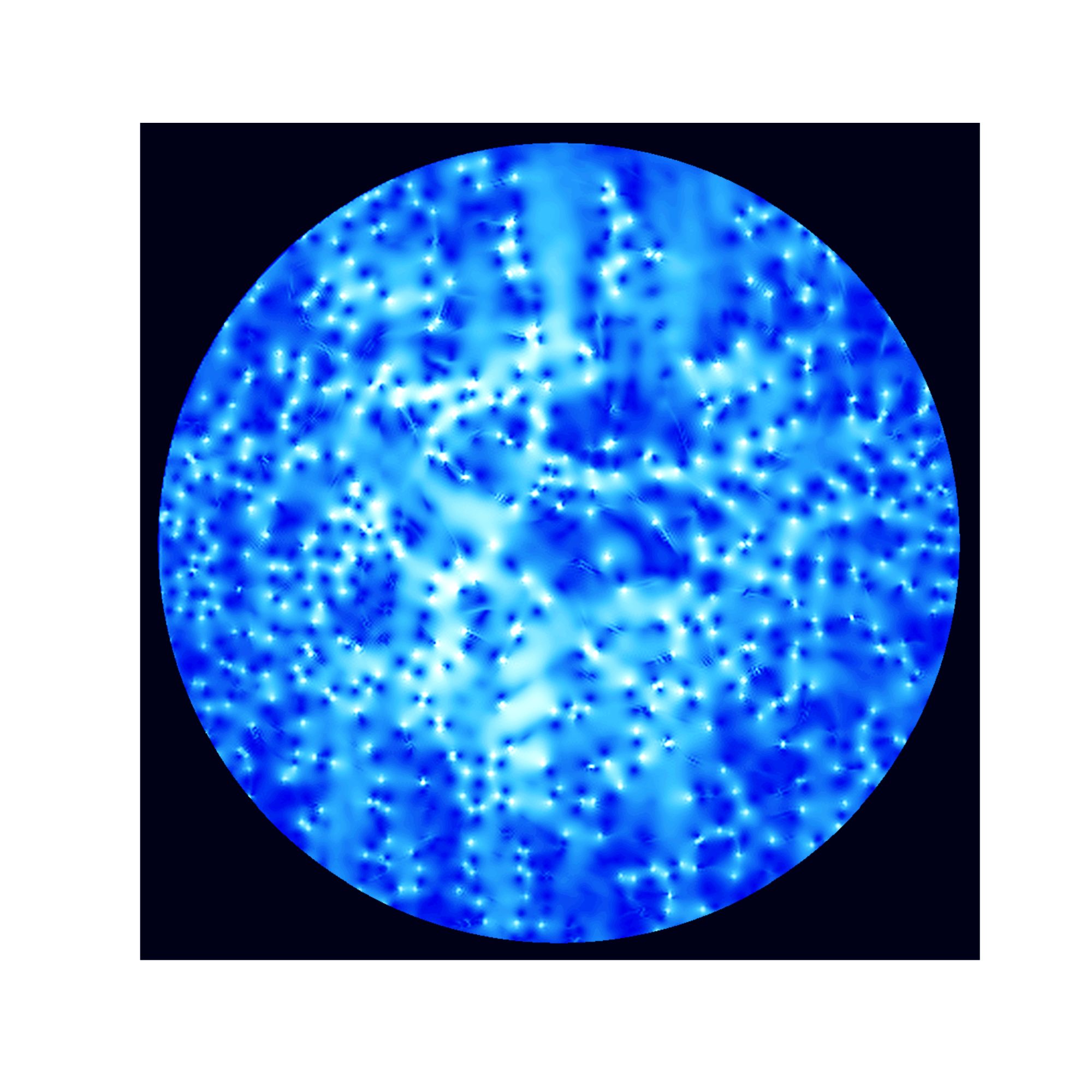The turbulent motion of fluids is probably the most complicated problem in Physics, but also one of the most important. Indeed, even today it is extremely difficult to make predictions about the turbulent dynamics of fluids. Yet turbulence is fundamental for describing, for example, the aerodynamics of an airplane and the flow of blood in our arteries, but also for understanding the existence of the Earth's magnetic field and the eruptions of the solar corona.
In an article recently published in Nature Photonics, scientists from the Institute of Physics of the Polish Academy of Sciences, the University College London (UK) and the advanced photonics group of the CNR-NANOTEC (Italy), for the first time have created turbulent motion in a fluid of light, effectively opening up a new field of research that, by exploiting the potential of photonics, makes it possible to study turbulence with unprecedented precision.
Dario Ballarini, first researcher at CNR-NANOTEC, explains: -Although in principle turbulent motion is governed by well-known equations (Navier-Stokes equations), the difficulty of the problem lies in the nonlinearity of these equations with respect to the fluid's velocity and the wide range of spatial scales involved. These two elements make it difficult to numerically simulate turbulent dynamics, even using the very powerful computers available today. In the last century, important progress has been made in this regard. In 1941, A.N. Kolmogorov correctly hypothesised a fundamental aspect of turbulence, namely the presence of 'energy cascades-.
-In a volume of fluid in turbulent motion, energy flows from very large vortex structures to progressively smaller ones, inertially and without dissipation, until very small spatial scales are reached, where the energy is finally dissipated into heat-, explains Daniele Sanvitto, research director of the group at CNR-NANOTEC. -Surprisingly, in two dimensions, i.e. in the turbulent motion of a thin sheet of fluid, exactly the opposite happens: larger vortices form from smaller ones and create stable, large vortex patterns over time. This is not a mere mathematical curiosity; on the contrary, this 'inverse cascade' of energy is at the basis of the accumulation of plastics in the oceans (the motion of surface waves can actually be considered as two-dimensional) and the stability of vortex structures that extend thousands of kilometres into the earth's atmosphere'. This statistical description is due to the complexity of the problem, but quantum physics becomes unsuspectedly useful for approaching the problem of turbulence from another angle.
Paolo Comaron, from the Institute of Physics of the Polish Academy of Sciences and University College London, who together with Michał Matuszewski developed the theoretical analysis of this work, adds - Unlike classical turbulence, which is ubiquitous in everyday life, quantum turbulence is extremely difficult to study and requires the careful preparation of quantum fluids. In a quantum fluid, vortices are quantized and allow for the development of simplified turbulence models (point-vortex models), suggesting that an understanding of quantum turbulence can serve to capture the essential and still mysterious aspects of turbulence in classical fluids. Recently, the control of quantum fluids reached high levels of precision, making it possible to put into practice the ideas of L. Onsager and R. P. Feynmann, who had introduced the study of quantum turbulence. However, in two dimensional light systems this is still largely unexplored: this prompted us to study turbulence in a new system, quantum fluids of light-.
In this study, the researchers of the international collaboration were able to observe the inverse energy cascade and the formation of vortex clusters of the same sign in a quantum fluid of light, showing that even in two dimension quantum and classical turbulence share the same fundamental processes. The possibility of measuring the speed of a quantum fluid of light and tracking the movement of quantum vortices in these optical systems offers enormous hope for the understanding of a phenomenon that has proved intractable for centuries.
